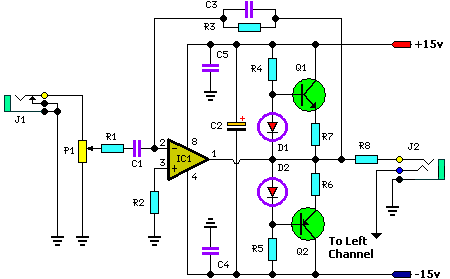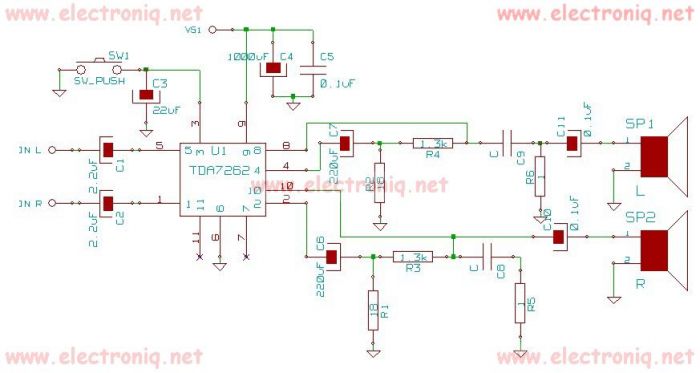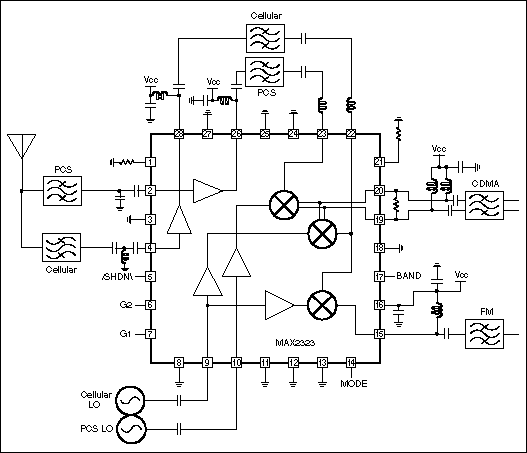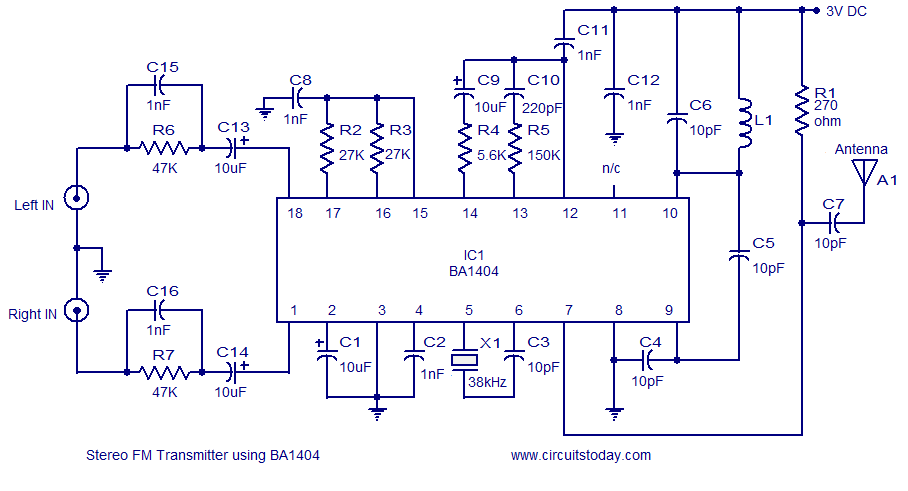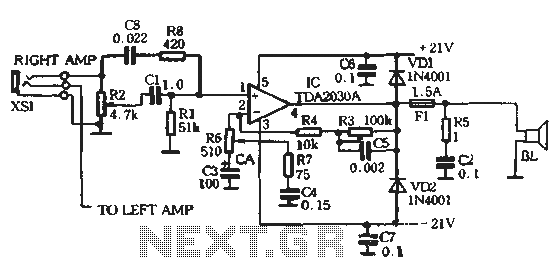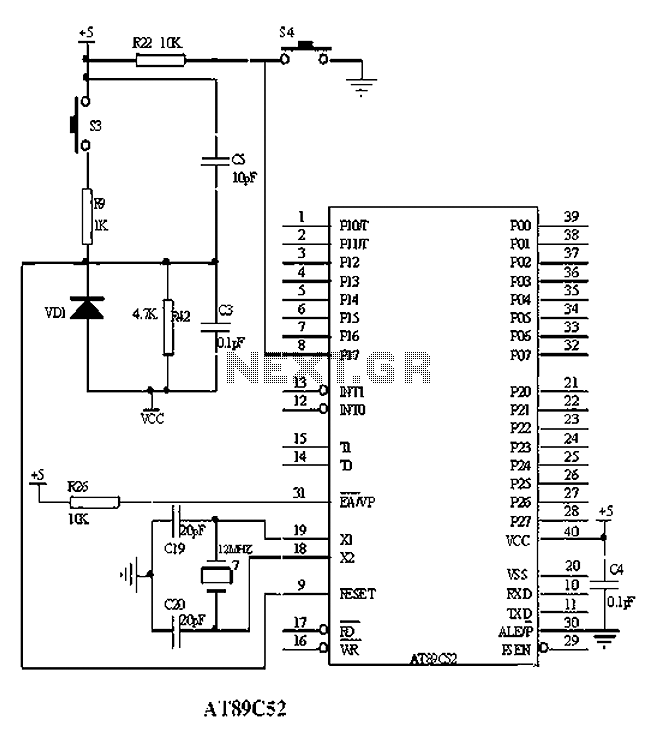
Derived Center-Channel Stereo System

A straightforward technique for obtaining a center or third channel without the need for an additional transformer or amplifier. Four speakers are connected to eight amplifier taps, while eight and sixteen speakers are connected to sixteen taps. By blending the inputs, it is feasible to eliminate unwanted crosstalk.
This method focuses on optimizing audio output in multi-channel sound systems by utilizing existing amplifier taps to create a center or third channel, which is often essential for enhancing the listening experience in stereo or surround sound setups. The configuration involves four speakers connected to eight amplifier taps, which allows for a balanced distribution of audio signals. This arrangement can be particularly beneficial in scenarios where space or budget constraints limit the addition of extra components such as transformers or dedicated amplifiers.
The connection of eight and sixteen-ohm speakers to sixteen taps facilitates flexibility in speaker selection while maintaining compatibility with the amplifier's output. This adaptability ensures that various speaker impedances can be effectively managed without compromising sound quality.
The technique of blending inputs is crucial for minimizing crosstalk, which can occur when audio signals from different channels interfere with one another, leading to a muddied soundstage. By carefully adjusting the input levels and utilizing phase cancellation techniques, it is possible to achieve a clearer audio output. This is particularly important in applications where clarity and separation of sound channels are necessary, such as in home theater systems or professional audio environments.
Overall, this method presents a cost-effective and efficient solution for enhancing audio systems, providing a practical approach to achieving a center channel without the need for additional components. A simple method of deriving a center or third channel without the use of an extra transformer or ampli fier, (a) 4- speakers are connected to 8- amplifier taps. 8 and 16- speakers connect to 16- taps, (b) By blending the inputs it is possible to cancel out undesired crosstalk.
This method focuses on optimizing audio output in multi-channel sound systems by utilizing existing amplifier taps to create a center or third channel, which is often essential for enhancing the listening experience in stereo or surround sound setups. The configuration involves four speakers connected to eight amplifier taps, which allows for a balanced distribution of audio signals. This arrangement can be particularly beneficial in scenarios where space or budget constraints limit the addition of extra components such as transformers or dedicated amplifiers.
The connection of eight and sixteen-ohm speakers to sixteen taps facilitates flexibility in speaker selection while maintaining compatibility with the amplifier's output. This adaptability ensures that various speaker impedances can be effectively managed without compromising sound quality.
The technique of blending inputs is crucial for minimizing crosstalk, which can occur when audio signals from different channels interfere with one another, leading to a muddied soundstage. By carefully adjusting the input levels and utilizing phase cancellation techniques, it is possible to achieve a clearer audio output. This is particularly important in applications where clarity and separation of sound channels are necessary, such as in home theater systems or professional audio environments.
Overall, this method presents a cost-effective and efficient solution for enhancing audio systems, providing a practical approach to achieving a center channel without the need for additional components. A simple method of deriving a center or third channel without the use of an extra transformer or ampli fier, (a) 4- speakers are connected to 8- amplifier taps. 8 and 16- speakers connect to 16- taps, (b) By blending the inputs it is possible to cancel out undesired crosstalk.
